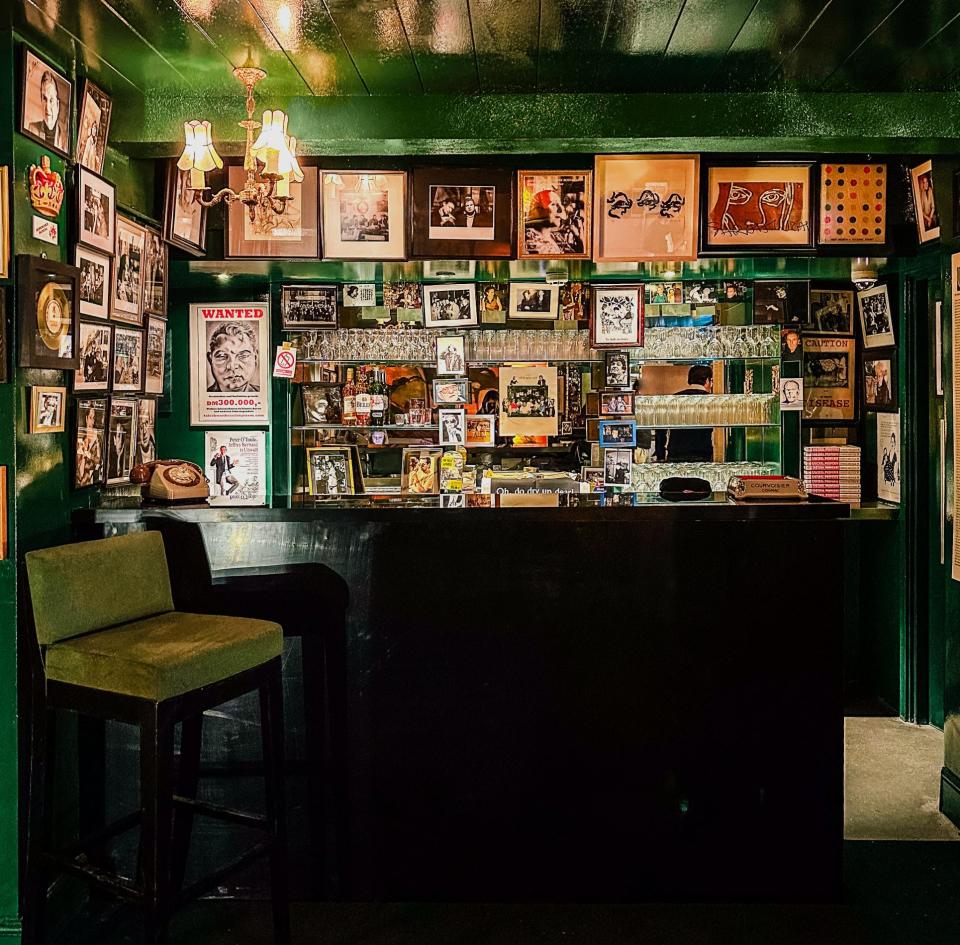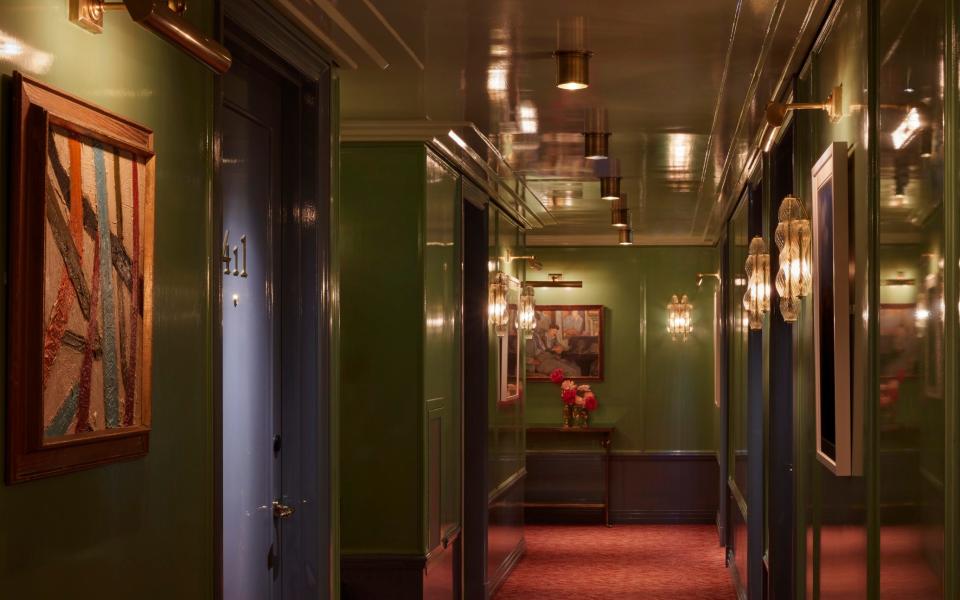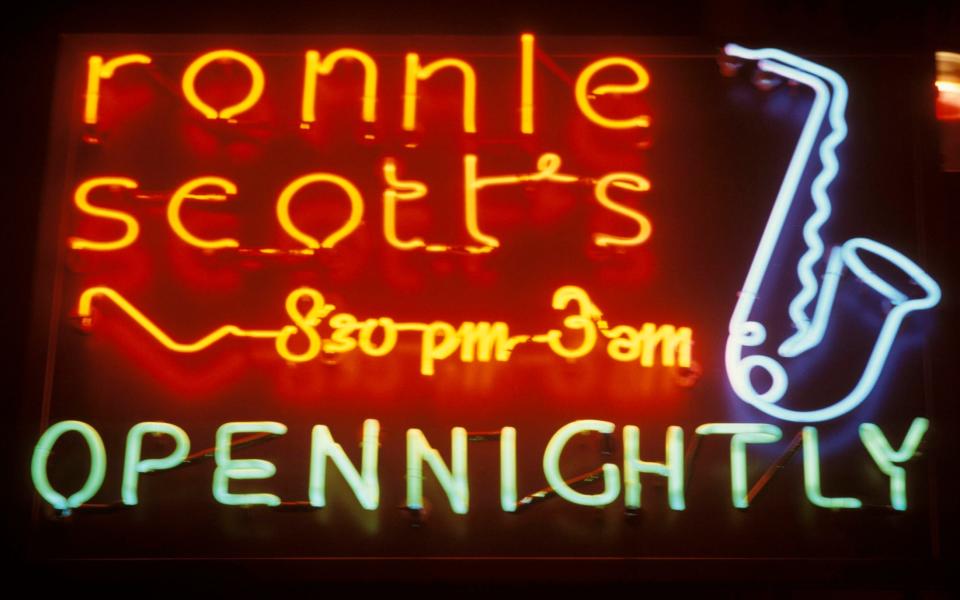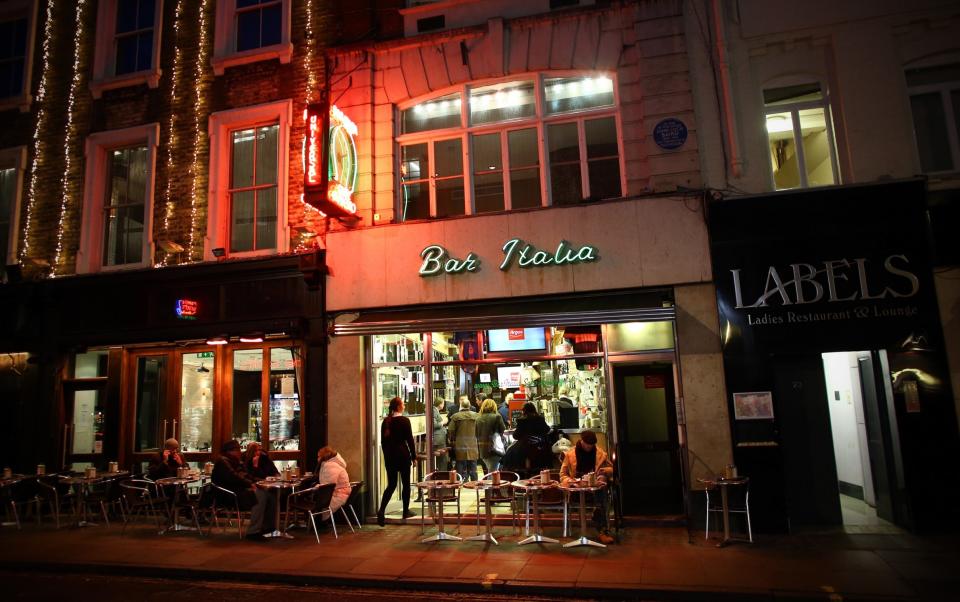‘It’s not about money, it’s about soul’: why Soho remains London’s coolest quarter

The doors are open (again) at the tiny Colony Room Club, for 60 years the haunt of Soho’s most bibulous denizens. The same hours of 3pm to 11pm, the same swamp-green walls, the same slightly wonky salon-hang of artworks. Missing is the ghostly cast of regulars – artists, writers and boozers, many of them long gone – and its formidable original landlady, Muriel Belcher, who died in 1979.
Oh, and it won’t be at 41 Dean Street. This version of the famous bar, Colony Room Green, is on Heddon Street, Mayfair (beneath the Daisy Green Collection’s Bowie-themed restaurant Ziggy Green) and it opens today. At the helm of the subterranean Colony Room 2.1 (or 2.2, as this is the second revival) is the artist, author and former member Darren Coffield, who owns much of the memorabilia.
Soho, on the other hand, has just opened The Broadwick, a 57-room hotel on the corner of Broadwick and Berwick Streets, with its name in lights above the door and two gigantic elephants out front in leopard skin and top hats, easily holding their own against the rickshaws pulsing by like crazed jellyfish.

The new hotel faces the glass-fronted dim sum joint Yauatcha. They dwarf their elderly neighbours: the Blue Posts pub, Berwick Street and its market, vinyl sellers Universal Sounds and Reckless Records, and the newsagent on the corner with its red-and-white-striped awning.
Cue moaning about Soho losing its mojo. “Oh, not again,’ said Simon Buckley, the rector of St Anne’s Soho, showing me pictures of the church flattened in 1940 to be replaced by today’s chapel and community centre. “Soho changes with every generation. It was a refuge for the Huguenots, then came artisans and craftspeople, then Jewish tailors and the rag trade, the music, film and advertising industries, then the sex trade, followed by the LGBTQ community. Now it all seems to be about food and drink.”
I do have a bit of skin in the game. I got to Soho the year that Muriel Belcher died. My first job was in a film company on Wardour Street (gone); my female boss was known to dance on the tables over lunch at the Gay Hussar (gone); I saw my first porn hand-turned on a Moviola (gone); and as a journalist I’ve wasted many a happy night in the Groucho and Bar Italia (both still here) or in Blacks (just gone).

In other words, and like most people, I never saw Francis Bacon slumped at the bar or got trollied with Tracey Emin – they’re all borrowed memories, as are the jazz joints of the 1920s and the skiffle bars of the 1950s. While I genuinely miss the grottiness, I’m quite startled, looking at pictures from the early 1980s, that it didn’t bother me how sleazy or how sexist it was. And yes, I miss the un-curated jumble of businesses and people, the variegated world that existed when property was cheap, but that’s just not how London works anymore, whether you’re in Soho or Dalston, Clapham or Camden Town.
I still delight in Soho. It’s a brilliant area of London, the other Square Mile; a dense grid of streets the shape of an axe-head, bordered by Oxford Street, Regent Street, Shaftesbury Avenue and Tottenham Court Road, spilling over into busy Chinatown to the south, with two squares and several churches.
There’s a surprising amount of the old stuff. Who couldn’t love Meard Street, a strip of early Georgian houses still standing after 300 years, like carefully maintained teeth? A friend has just sent a link to last week’s thebluemoment blog on the subject by the music writer Richard Williams. Who couldn’t love the fact that Ronnie Scott’s is not just there but thriving – as you’ll know if you’ve tried to book recently – or that the Algerian Coffee Stores (1887) and Italian deli I Camisa still exist on Old Compton Street?

But what matters is now, and what saves Soho, despite the chains and the slightly creepy curation of space, is that it’s still working. The big production and post-production houses, De Lane Lea, Molinare and MPC, are still there, as are many design and advertising businesses. A seven-storey office complex, Lumen, has opened behind the digital screens at Piccadilly Circus, which should keep the bustle going.
Many tiny spaces house independent businesses, from food to fashion. Fabulous old stalwarts such as Andrew Edmunds on Lexington Street, whose eponymous owner sadly died in 2022, have been joined by a staggering variety of food, much of it Asian, often in venues so tiny they won’t take bookings.
The 21st century has seen the venerable Soho Theatre Company occupy a new concrete home on Wardour Street, the arrival of two hugely popular Firmdale hotels – Ham Yard, named after the 1920s Ham Bone Club, and the Soho Hotel, with its giant bar – and a revived Carnaby Street, as shamelessly commercial as it was when it was selling loons and kipper ties in the 1960s and greatly loved for its Christmas lights. There’s a great little French biodynamic wine bar, Antidote, just off the main drag.

Meanwhile, the purple roundel of the Elizabeth Line has popped up at the top of Dean Street, marking one of two new entrances to Tottenham Court Road Tube station. Several old favourites were flattened in the process, but opposite the other entrance, with its weirdly mesmerising giant cube of digital images, is Soho’s first new theatre in 50 years: Nimax’s 600-seat @SohoPlace, under producer Nica Burns.
The place I always go to is Bar Bruno on Wardour Street, an Italian cafe that is pretty well unchanged in 40 years. The place I’d love to stay in is also old – Hazlitt’s, a handsome 30-room hotel in a 1718 house on Frith Street, once home to the essayist of that name.
Douglas Blain, one of its founders, was also a key player in the saving of Spitalfields.
“Atmosphere is the easiest thing to destroy and the hardest thing to create,” he said in a recent interview, “It’s not about money. It’s about soul.” Please take note, developers of Soho. We are watching closely.


